
It's my annual ritual. Rather than make predictions for the new year, I arrogantly tell Companies X, Y or Z what they should do. This year, I asked colleague Ed Oswald to offer Apple resolutions, and Google's will come from you. I've got Microsoft, but, sadly, my list looks too much like last year's, and that's disturbing. If the world doesn't end for the rest of us in 2012, as Mayans predicted, it could for Microsoft, if CEO Steve Ballmer and top execs don't take the post-PC era more seriously.
In mid December 2010, I warned that "2011 will be make or break" for Microsoft. Viewed from perception, the year was more "make", as Microsoft marketing, successful BUILD conference and Xbox Kinect helped lift a long sagging image. Last year I put forth: "Perception management is a good 2011 priority for Microsoft, with no new versions of its flagship products planned for the year. The company needs to give consumers, developers and IT Pros reasons to get excited again about Microsoft software and OEM products". There, Microsoft succeeded.
Otherwise, 2011 was more "break", because Microsoft couldn't keep pace with competitors, particularly Apple, Amazon and Google, which are driving forces shifting informational and computing relevance to connected portable devices from PCs. Kinect was a winner, while Apple and Android partners served Windows Phone for dinner.
For this year, several 2011 resolutions didn't make the cut:
- "Open a unified applications store", which Microsoft is kind of doing (but not completely) with the Windows Store.
- "Open 50 more stores or cafés"; Microsoft has committed to 75 stores within two or three years, which is good enough.
- "Engage enthusiasts", something the company is doing much better at.
With that introduction, I present 10 resolutions Microsoft should make for 2012, from least to most important. You may be surprised at No. 1, because it was last in 2011.
10. Hold smaller, more-intimate product events. The best news coming out of Microsoft at end of 2011 surprised many people: The company is done with Consumer Electronics Show. Hot damn, it's about fraking time. These big tradeshows are anachronisms. They are total wastes of time.
They're expensive, and value is questionable, because there is so much noise from other companies. Apple, Facebook and Google maximize buzz without investing in big events. Microsoft needs to hold even more intimate events than it does now for bloggers, customers, enthusiasts, news media or partners -- lots of them. I'm not talking about the ongoing marketing and sales roadshows Microsoft already does, but invitation-only gatherings, like Apple's. They will generate buzz, particularly if the target audience doesn't officially include bloggers or journalists (but they can get in with a little prodding).
Intimacy is hugely important to any relationship. It's easy for anyone with a keyboard to write bad things about an amorphous, distant corporation. It's something else when those same people interact with real executives and product managers. Personal contact changes everything. Walmart is a good example. Those greeters at the door aren't just there to be friendly. Walmart has learned that people who identify the store with a real person, the greeter, are less likely to steal.
9. Step up "value marketing." This one was No. 4 last year, and almost needn't be on the list. Microsoft successfully stepped up value marketing in 2011. For example, late-year Microsoft marketing campaign "It's a great time to be a family" is spot on. One of Microsoft's founding principles is value -- making computing affordable enough to put a PC on every desktop, in every home. Microsoft marketing had drifted from the value principle, but finally is company back in line. But nowhere near enough.
Value isn't about low pricing but getting the most from what you spend. For families, there is the value products bring to them. The measure is often emotional. McDonalds succeeds for many reasons, but family values is among them. Happy Meals help make McDonalds an affordable place to bring the kids to eat. Later, as teenagers, they go there and shop the "value menu".
For enterprises, isn't that what ROI (return on investment) and TCO (total cost of ownership) are all about? Perhaps one reason Apple focuses so little marketing efforts on enterprises is that it has so little value -- ROI and TCO -- to sell them.
I see good Microsoft "value marketing" to consumers but nowhere near enough for enterprises. That's why this resolution remains on the list for 2012.
8. Bring back Bill Gates -- to sell Microsoft products, vision. This one was No. 8 last year as well. Microsoft has an identity problem. It's too good at too many things, which makes products harder to sell. The company also isn't viewed as an innovator. Chairman Bill Gates is regarded as visionary and there is lots of goodwill given to him as a prominent philanthropist. Microsoft should bring him back as pitch man -- not to run the company as was repeatedly suggested in 2011.
The technosphere is overly-obsessed with Apple cofounder Steve Jobs, even more so following his death. Jobs is now canonized as innovator extraordinaire. But the majority of people aren't like Jobs. They're more like Gates, whose stilted speaking and awkward manner is more like them. Sure Gates is smarter than most people, which makes him unlike most everyone else from another perspective. But he's also the American Dream, the self-made and shrewd billionaire whose products are used by most of the world's population. Success commands respect, as does his philanthropy.
Even better, bring in the Gates family, talking about how they use Microsoft technology in their home or when traveling the globe. Imagine, for example, an ad campaign that follows the Gates from country to country, using Microsoft products and showing their value among people in many emerging markets.
7. Make Bing a development platform. Microsoft already is heading in this direction, as seen during the BUILD conference and plans revealed for Windows 8. Bing as a platform developers plug into their software or services is smart way to drive usage and push up search share against Google.
6. Ship Windows 8 by back-to-school buying season. I feel obligated to put something about the new operating system on the list, even though it's so damn obvious. Timing isn't. Everyone is thinking Windows 8 for the holidays, I say that's way too late. If Windows 8 tablets aren't selling for back to school 2012 (and they likely won't be with public beta expected in February), Microsoft already has fraked up. iPad is sapping PC sales among consumers -- and that's starting to bleed into the business market.
Meanwhile, Apple is rapidly becoming the brand of choice among Millennials. Microsoft simply can't bring Windows 8 to market fast enough. Internet Explorer 10 comes with it, and competitively Chrome is doing too well against older IE versions (see #5). Microsoft's 2012 motto should be: Don't wait on Windows 8.
5. Set shorter marketing and product development goals. This one was No. 10 last year (out of 11). Microsoft isn't keeping pace with Internet time and hasn't for some time. Meanwhile, Google sets a rapid pace -- in little more than three years going from nowhere to somewhere with Android (US smartphone OS leader in 2010 and 2011, according to NPD) and Chrome (in December No. 3 browser and closing on Firefox). Both products launched in autumn 2008. Then there is Facebook, which iterates with a vengeance. Pace of innovation keeps nimbler companies in the news, on the blogs, generating positive perceptions. Speaking of social networks, look at Google+, which grows at breakneck pace in little more than six months. Microsoft has what?
Microsoft's long-standing strength -- executing on long-term plans, whereas many public company competitors set quarterly goals that change too often -- is now a liability. The Microsoft that released three versions of Internet Explorer in about 18 months during the late 1990s executed tactically while keeping long-term plans in place. Microsoft needs to return to this kind of approach.
Speaking of IE, look at the pace at which Google innovates Chrome, and Mozilla follows suit with Firefox -- both keep to six-week development milestones. According to Net Applications, Internet Explorer usage share fell to 52.64 percent in December 2011, from 60.35 percent in November 2009 and more than 90 percent at the end of 2004, when Firefox shipped. Usage share for Safari, the other browser on slow development track, also is down. Meanwhile Chrome usage share was 19.11 percent in December, up from 18.18 percent in November, 17.62 percent in October and 9.5 percent in November 2010.
Setting and achieving short-term goals can boost mindshare -- that Microsoft is truly innovating, if nothing else.
4. Buy Nokia -- that is if Google gets regulatory approval for the Motorola Mobility merger. A year ago, I couldn't imagine making this recommendation. In February 2011, I called Microsoft's Windows Phone OS distribution deal with Nokia a "silent takeover" and affordable one at that. But much has changed in 11 months.
For starters, Google will gobble up Motorola Mobility, putting it in the hardware-software-services business, that's as long as regulators grant approval. Galaxy Nexus, which Google co-designed with Samsung, is an exceptionally good smartphone, with hardware-software-services integration being the hallmark. Imagine what Google will eventually produce from its own company and something to truly take on iPhone/iOS. Microsoft can't rely on Windows Phone OS licensing alone to compete.
Secondly, Microsoft bought Skype for $8.5 billion last year. The voice-over-IP service is primed for mobile and Microsoft needs an integrated platform to use it to transform personal communications. Skype should have been the next really big thing in mobile long ago. Microsoft could make it so and doing so put some luster into Windows Phone.
Finally, Windows Phone is a failure, sadly, as I predicted it would be in February 2010. There is much to like about Windows Phone as an operating system, but Microsoft started too late behind upstarts Android and iOS. For example, Microsoft's US mobile OS subscriber share on smartphones was 5.2 percent at the end of November, according to data comScore released last week. That's for a three month share loss of half a point. Meanwhile, Android grew three points to 46.9 percent share and iOS to 28.7 percent from 27.3 percent.
On December 12, Ballmer essentially sacked Windows Phone president Andy Lees, Japanese style, by stripping him of authority. That says much about the state of Windows Phone, which following is loyal but too small.
Nokia has global reach and distribution channels. It's practically a takeover now anyway. Microsoft should finish the job and use Nokia to create branded smartphones -- and tablets, too.
3. License Kinect to anyone and everyone -- cheaply. In November 2010, when Microsoft shipped the first Kinect game controller, it looked like nothing more than that. Today, Kinect is an emerging development platform and one that looks to transform how people interact with all kinds of products. Kinect is a transformative user interface that businesses already use for medical research and diagnosis and for education, among others. What's exciting about Kinect is the sheer potential. I've repeatedly asserted that the most natural user interface is you.
Microsoft released the Kinect for Windows SDK beta in June and plans commercial release this year -- there could even be an announcement next week during CES. But Kinect won't connect without aggressive Microsoft support. Kinect could be a huge platform used in many different products, if Microsoft puts the kind of resources into Kinect it detects to, say, developers and partners supporting Windows.
Technology like Kinect is the stuff of science fiction. If Microsoft and its partners do what's right with connect, you'll start reading and viewing more of the "i" associated with Microsoft. Not "i" as in iPad or iPhone but innovation.
2. Empower internal "cloud" startups. This one was No. 1 last year. Many of Microsoft's best, mid- to-late-Noughties products or services came from incubation projects. Some are mainstream today, like Windows Live SkyDrive. But Microsoft killed off most internal startups following the September 2008 stock market crash.
Microsoft must bring them back and focused on mobile and the cloud. Incubation groups should operate like mini-startups, free to develop unfettered by any requirement to connect any of their work to any other Microsoft product, particularly Office or Windows. Let them run free, run wild, wildly innovate. Reward innovation, with pay incentives and other goodies. Appoint a chief startup officer (see #1), to whom employees can submit their projects, getting them outside stifling bureaucracy and mid-managers' self-preserving priorities. Empowered employees will produce. Microsoft just needs to let them.
1. Appoint a Chief Startup Officer. Post-September 2008 Microsoft is one of larger development silos, leveraged off the main product groups. There are now eight: Interactive Entertainment; Microsoft Business Solutions; Microsoft Office; Online Services; Server and Tools; Skype; Windows & Windows Live; and Windows Phone. The silo approach stifles real innovation. It's a great strategy for extending the Office-Windows-Windows Server app stack to the cloud -- essentially keeping the status quo relevant longer -- but not for innovating or inspiring employees to make exciting new stuff.
Microsoft needs someone internally responsible for encouraging internal incubation projects and bringing them to market -- outside the normal management structure.
There needs to be a fairly free-flowing process allowing employees to bring ideas to the CSO and get funding for proof of concepts, at the least. The CSO, answering to Ballmer, should have authority to spin-off new product groups as well. But more immediately he or she needs authority to create small product groups within Microsoft, focused on getting new innovations to market faster and without obligatory ties to core products like Office or Windows.






 Piriform Software has released the first stable release of
Piriform Software has released the first stable release of  Users of MegaUpload may have a brief window to retrieve files from the site after the law firm representing the file sharing service says it is negotiating a solution with the US Government. While the primary function of the negotiations is likely to gather evidence so that MegaUpload's lawyers can build their defense, it is possible the general public may temporarily gain access to their accounts.
Users of MegaUpload may have a brief window to retrieve files from the site after the law firm representing the file sharing service says it is negotiating a solution with the US Government. While the primary function of the negotiations is likely to gather evidence so that MegaUpload's lawyers can build their defense, it is possible the general public may temporarily gain access to their accounts.
 A week after
A week after 


 Ahead of its official unveiling,
Ahead of its official unveiling, 

 When CyberMatrix released Clipboard Magic 4 it was one of the better clipboard managers around, effortlessly capturing every text item copied to your clipboard and retaining them in a list for easy re-use later.
When CyberMatrix released Clipboard Magic 4 it was one of the better clipboard managers around, effortlessly capturing every text item copied to your clipboard and retaining them in a list for easy re-use later. We’ve reached the end of the first month of 2012 and this has been another busy week for software releases. If it seemed a little quiet on the browser updates recently, things changed this week with the release of
We’ve reached the end of the first month of 2012 and this has been another busy week for software releases. If it seemed a little quiet on the browser updates recently, things changed this week with the release of  If you are more interested in software than hardware, take a look at
If you are more interested in software than hardware, take a look at 


 You can find plenty of bargains at
You can find plenty of bargains at  World-famous microblogging service Twitter has changed its policies and will "reactively withhold" (read: censor) tweets deemed illegal or harmful in countries with laws concerning such things.
World-famous microblogging service Twitter has changed its policies and will "reactively withhold" (read: censor) tweets deemed illegal or harmful in countries with laws concerning such things.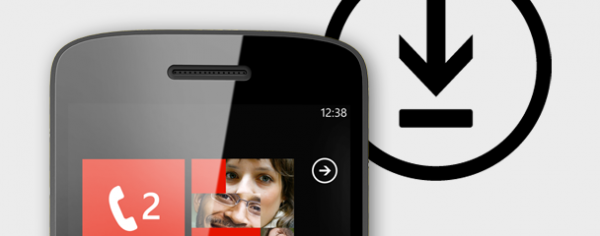
 Normally it’s best to allow everyone their privacy when using a PC. But there may be occasional exceptions. You might legitimately be concerned about the content your kids are accessing online, for instance, or want to confirm that a work PC really is being used for work purposes;d
Normally it’s best to allow everyone their privacy when using a PC. But there may be occasional exceptions. You might legitimately be concerned about the content your kids are accessing online, for instance, or want to confirm that a work PC really is being used for work purposes;d 

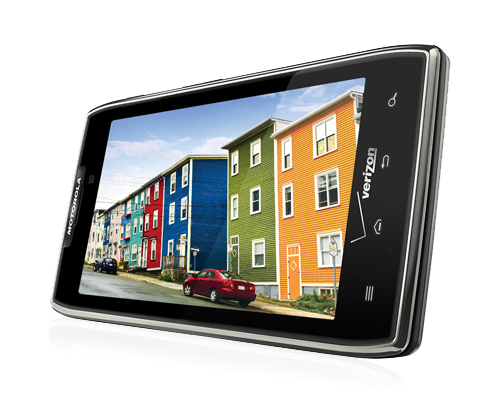


 Popular system cleanup and optimization tool CCleaner has been updated with a range of improvements and a smattering of new features.
Popular system cleanup and optimization tool CCleaner has been updated with a range of improvements and a smattering of new features. 
 Putting information on the web is supposed to make it more convenient to access, but of course it doesn’t always work out that way. Especially if you’re accessing a site that is incredibly slow, for instance. Or you’re trying to download content that is spread all around the site, like multiple zip files, one each across many pages.
Putting information on the web is supposed to make it more convenient to access, but of course it doesn’t always work out that way. Especially if you’re accessing a site that is incredibly slow, for instance. Or you’re trying to download content that is spread all around the site, like multiple zip files, one each across many pages.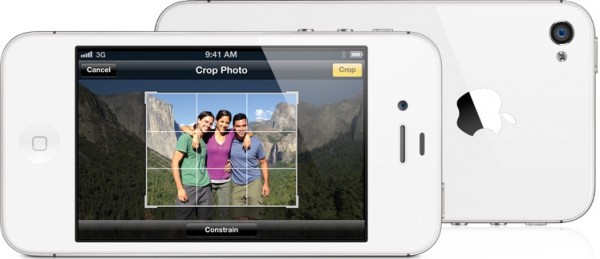


 It's likely that most will expect domains belonging to popular web-based e-mail services are at the top of the list for the mountains of spam we receive everyday. That's not the case: the most common spam domains according to Chelmsford, Mass.-based security firm AVG are social networks.
It's likely that most will expect domains belonging to popular web-based e-mail services are at the top of the list for the mountains of spam we receive everyday. That's not the case: the most common spam domains according to Chelmsford, Mass.-based security firm AVG are social networks.

 There are a number of tools that computer users will install by default on their Mac or PC -- an email client, web browser, media player and an office suite. Make the move to a mobile platform such as iOS or Android and the range of apps you need changes slightly. Most phones and tablets will comes with a number of apps pre-installed including a calendar, messaging tool, web browser and various other tools. One thing that is generally left out of the mix is a mobile office suite.
There are a number of tools that computer users will install by default on their Mac or PC -- an email client, web browser, media player and an office suite. Make the move to a mobile platform such as iOS or Android and the range of apps you need changes slightly. Most phones and tablets will comes with a number of apps pre-installed including a calendar, messaging tool, web browser and various other tools. One thing that is generally left out of the mix is a mobile office suite.

 Chris Boss is an advanced Windows API programmer and developer of 10 year-old
Chris Boss is an advanced Windows API programmer and developer of 10 year-old 


 Capturing what’s on your desktop can be as simple as hitting the Print Screen key and pasting the contents of the clipboard into an image editing app. But you’ll notice that it is not possible to capture everything; the cursor cannot be included in grabs and many dialogs disappear when Print Screen is pressed.
Capturing what’s on your desktop can be as simple as hitting the Print Screen key and pasting the contents of the clipboard into an image editing app. But you’ll notice that it is not possible to capture everything; the cursor cannot be included in grabs and many dialogs disappear when Print Screen is pressed. 
 Opponents of the Motion Picture Association of America are using the US Government's recently created "We The People" online petition service to force the Obama Administration to take a position on some controversial comments by former Conn. Senator-turned MPAA chief Chris Dodd to Fox News last Thursday.
Opponents of the Motion Picture Association of America are using the US Government's recently created "We The People" online petition service to force the Obama Administration to take a position on some controversial comments by former Conn. Senator-turned MPAA chief Chris Dodd to Fox News last Thursday.
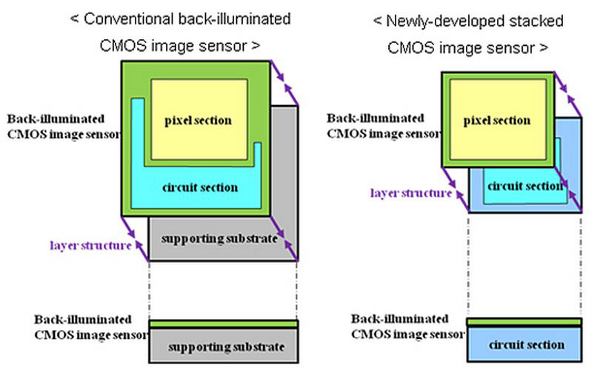






 Last month, in preparation for a panel, I was asked to put together a list of pros and cons with respect to using Big Data techniques in the context of information security technologies. While Big Data has benefits that span many security disciplines, it’s important to look at this from the perspective of what we call Advanced Malware Protection, which is the ability to discover, analyze and block advanced malware.
Last month, in preparation for a panel, I was asked to put together a list of pros and cons with respect to using Big Data techniques in the context of information security technologies. While Big Data has benefits that span many security disciplines, it’s important to look at this from the perspective of what we call Advanced Malware Protection, which is the ability to discover, analyze and block advanced malware. Zulfikar Ramzan is a chief scientist for
Zulfikar Ramzan is a chief scientist for  When you’re thinking of files that you really should include in a backup, then saved games probably don’t rank highly on the list. But maybe they should. After all, in some cases your current game state will represent hours, days, maybe weeks of effort, and if for some reason this gets lost, will you really want to start again from the very beginning? (No. Didn’t think so.)
When you’re thinking of files that you really should include in a backup, then saved games probably don’t rank highly on the list. But maybe they should. After all, in some cases your current game state will represent hours, days, maybe weeks of effort, and if for some reason this gets lost, will you really want to start again from the very beginning? (No. Didn’t think so.) Want to download YouTube videos to your PC? The choices are endless, with
Want to download YouTube videos to your PC? The choices are endless, with 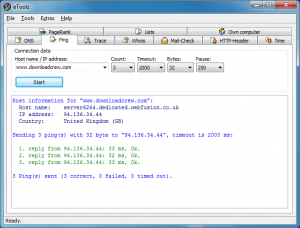 If you’re not comfortable with the command line versions of Ping, Traceroute and other essential network tools, then there’s no shortage of GUI versions which offer a little extra convenience.
If you’re not comfortable with the command line versions of Ping, Traceroute and other essential network tools, then there’s no shortage of GUI versions which offer a little extra convenience. The phrase two heads are better than one didn't prove true for Research in Motion, which late today pushed aside its co-CEOs and replaced them with a single chief executive. It's a major shakeup that analysts called for more than a year ago. Out: Mike Lazaridis and Jim Balsillie. In: Thorsten Heins, who assumes his new responsibilities starting tomorrow. RIM has scheduled an 8 am ET conference call.
The phrase two heads are better than one didn't prove true for Research in Motion, which late today pushed aside its co-CEOs and replaced them with a single chief executive. It's a major shakeup that analysts called for more than a year ago. Out: Mike Lazaridis and Jim Balsillie. In: Thorsten Heins, who assumes his new responsibilities starting tomorrow. RIM has scheduled an 8 am ET conference call. 

 This has been another busy week for software releases, so it would not be surprising if some gems had escaped your attention. This is exactly why we put together these weekly roundups, bringing you a selection of the best software from the preceding seven days. If you’re a fan of software and trying out the latest and greatest titles, you’re undoubtedly going to be interested in ensuring that you have the latest versions of all your favorite programs installed.
This has been another busy week for software releases, so it would not be surprising if some gems had escaped your attention. This is exactly why we put together these weekly roundups, bringing you a selection of the best software from the preceding seven days. If you’re a fan of software and trying out the latest and greatest titles, you’re undoubtedly going to be interested in ensuring that you have the latest versions of all your favorite programs installed. 
 An Android developer is looking to provide a home for apps that are otherwise verboten on the Android Market. Independent software engineer Koushik Dutta is in the final stages of developing such an app repository,
An Android developer is looking to provide a home for apps that are otherwise verboten on the Android Market. Independent software engineer Koushik Dutta is in the final stages of developing such an app repository,  Even with a majority of wireless consumers not even using 4G technology yet, the wireless industry is already looking to next-generation technologies. The International Telecommunications Union this week awarded both LTE-Advanced and WiMAX-Advanced the "official" designation of IMT-Advanced.
Even with a majority of wireless consumers not even using 4G technology yet, the wireless industry is already looking to next-generation technologies. The International Telecommunications Union this week awarded both LTE-Advanced and WiMAX-Advanced the "official" designation of IMT-Advanced.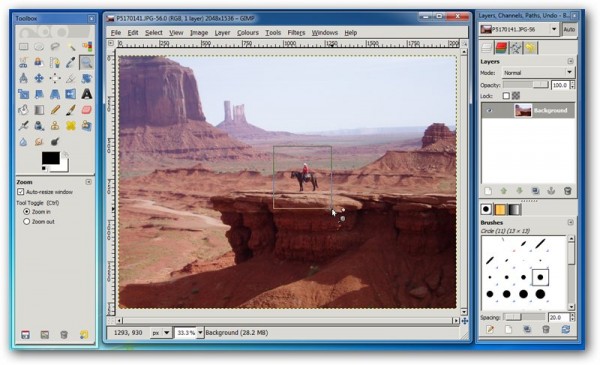
 For you Sherlock Holmes types out there, how would you like a case to crack?
For you Sherlock Holmes types out there, how would you like a case to crack?




 As the internet pats itself on the back for protesting SOPA and changing the minds of a handful of U.S. Senators, file-sharing site Megaupload has been brought down in one of the largest copyright infringement cases of all time.
As the internet pats itself on the back for protesting SOPA and changing the minds of a handful of U.S. Senators, file-sharing site Megaupload has been brought down in one of the largest copyright infringement cases of all time.  Two months ago,
Two months ago, 
 Everyone needs some form of backup, but while successive versions of the Windows Backup Tool have undoubtedly got better, they’re still not quite as intuitive or as comprehensive as we’d like them to be.
Everyone needs some form of backup, but while successive versions of the Windows Backup Tool have undoubtedly got better, they’re still not quite as intuitive or as comprehensive as we’d like them to be.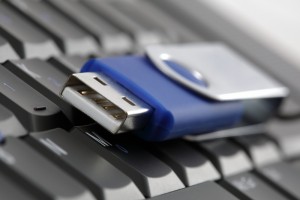 Building your own portable working environment on a USB flash drive is undoubtedly convenient. Equip it with your favorite productivity software, browser, email client, graphics tools and games and it’ll always be ready for use on any nearby PC.
Building your own portable working environment on a USB flash drive is undoubtedly convenient. Equip it with your favorite productivity software, browser, email client, graphics tools and games and it’ll always be ready for use on any nearby PC.
 It is now over eight months since I first reported to you
It is now over eight months since I first reported to you 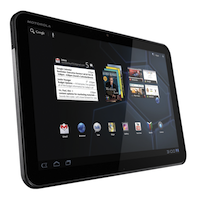

 If you’d like to remotely restart or shut down a system on your network then Windows already provides some basic assistance. A command like shutdown /s /m \\hostname, say, will try to close down the named computer, and you can tweak precisely how this will work in many different ways (enter shutdown /? at a command line for the full list).
If you’d like to remotely restart or shut down a system on your network then Windows already provides some basic assistance. A command like shutdown /s /m \\hostname, say, will try to close down the named computer, and you can tweak precisely how this will work in many different ways (enter shutdown /? at a command line for the full list).
 However, iPad's impact doesn't stop with the personal computer. It in some ways starts there. According to the report:
However, iPad's impact doesn't stop with the personal computer. It in some ways starts there. According to the report:




 Another major breach is in the headlines. Zappos, an online shoe and apparel retailer owned by Amazon, disclosed Sunday night that more than
Another major breach is in the headlines. Zappos, an online shoe and apparel retailer owned by Amazon, disclosed Sunday night that more than  Steven Sprague is CEO of
Steven Sprague is CEO of  Once you’ve finished working with a USB flash drive then it’s easy just to unplug it right away, but of course that’s usually not a good idea. If the Windows cache contains changes that haven’t yet been written to the drive then removing it may result in lost data, so it’s always best to eject the drive first.
Once you’ve finished working with a USB flash drive then it’s easy just to unplug it right away, but of course that’s usually not a good idea. If the Windows cache contains changes that haven’t yet been written to the drive then removing it may result in lost data, so it’s always best to eject the drive first.
 ISO images have been a popular means of distributing software for a very long time, so it was good to see Windows 7 finally introduce a tool to burn them to disc.
ISO images have been a popular means of distributing software for a very long time, so it was good to see Windows 7 finally introduce a tool to burn them to disc. Jan. 18, 2012 is designated SOPA blackout day, with prominent websites planning to go dark in protest of two bills working through Congress -- Stop Online Privacy Act and PROTECT IP Act (PIPA). If you've got a big school project due Thursday and plan on using Wikipedia, get your research done today. The community-based encyclopedia plans to go dark tomorrow, and it's not alone.
Jan. 18, 2012 is designated SOPA blackout day, with prominent websites planning to go dark in protest of two bills working through Congress -- Stop Online Privacy Act and PROTECT IP Act (PIPA). If you've got a big school project due Thursday and plan on using Wikipedia, get your research done today. The community-based encyclopedia plans to go dark tomorrow, and it's not alone.

 Data on up to 24 million customers of online shoe retailer Zappos was compromised according to an email sent by its CEO Tony Hsieh on Sunday. While Hsieh says that full credit card information is safe, hackers may have the last four digits of the cards.
Data on up to 24 million customers of online shoe retailer Zappos was compromised according to an email sent by its CEO Tony Hsieh on Sunday. While Hsieh says that full credit card information is safe, hackers may have the last four digits of the cards. I joined the
I joined the 







 If you want to view the created, accessed or last modified dates of a file from Explorer then that’s easy enough (right-click, select Properties).
If you want to view the created, accessed or last modified dates of a file from Explorer then that’s easy enough (right-click, select Properties).


 We’re only just through the second week of January, but the number of software releases is just as fast as ever. There have been so many applications hitting the servers over the last seven days, we wouldn’t be surprised if you had missed some here and there. This is why we have put together this handy roundup to get you back up to speed.
We’re only just through the second week of January, but the number of software releases is just as fast as ever. There have been so many applications hitting the servers over the last seven days, we wouldn’t be surprised if you had missed some here and there. This is why we have put together this handy roundup to get you back up to speed.


 Digiarty Software Inc has launched the first public beta of an
Digiarty Software Inc has launched the first public beta of an  While
While  The chorus of opposition to Google's
The chorus of opposition to Google's  While there are a lot of claims made about how tablet computers such as the iPad could be used as complete replacement for desktop computers, there are a number of obstacles that get in the way of this. There are a number of mobile versions of well-known desktop applications available, but these tend to be far more limited than the software you are used to using and there is also the problem of transferring files between devices to bear in min. These are problems that
While there are a lot of claims made about how tablet computers such as the iPad could be used as complete replacement for desktop computers, there are a number of obstacles that get in the way of this. There are a number of mobile versions of well-known desktop applications available, but these tend to be far more limited than the software you are used to using and there is also the problem of transferring files between devices to bear in min. These are problems that  As Opera has shown, mouse gestures can be a
As Opera has shown, mouse gestures can be a  January is traditionally a tight month for finances after all of the expenses of Christmas, but it is also the time of year when there are great bargains to be grabbed. Head over to the Downloadcrew store and you’ll find all manner of great deals with huge savings to be made on big name software.
January is traditionally a tight month for finances after all of the expenses of Christmas, but it is also the time of year when there are great bargains to be grabbed. Head over to the Downloadcrew store and you’ll find all manner of great deals with huge savings to be made on big name software. If you're writing apps for Android, or even thinking about it, Google has a new site for you:
If you're writing apps for Android, or even thinking about it, Google has a new site for you: 
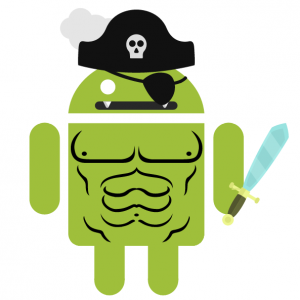 Microsoft now has licensing agreements with Android manufacturers covering 70 percent of all phones on the market following an agreement with LG over Android and Chrome OS announced Thursday. The Redmond, Wash.-based company has long maintained that "Android isn't free", and
Microsoft now has licensing agreements with Android manufacturers covering 70 percent of all phones on the market following an agreement with LG over Android and Chrome OS announced Thursday. The Redmond, Wash.-based company has long maintained that "Android isn't free", and 
 Network auditing software can be a great way to monitor what’s happening across your LAN. In just a click or two you can browse connected systems, look at key hardware details and check installed applications, without ever having to leave your own PC: very useful.
Network auditing software can be a great way to monitor what’s happening across your LAN. In just a click or two you can browse connected systems, look at key hardware details and check installed applications, without ever having to leave your own PC: very useful. When it comes to your computer, security takes a number of forms. There is the threat of viruses and spyware to consider, the importance of securing accounts with strong passwords and there is also the security of your files to bear in mind. You might think that when you delete the files you no longer need they are gone forever, but there are a variety of tools can techniques that can be used to recover data that has been ‘removed’.
When it comes to your computer, security takes a number of forms. There is the threat of viruses and spyware to consider, the importance of securing accounts with strong passwords and there is also the security of your files to bear in mind. You might think that when you delete the files you no longer need they are gone forever, but there are a variety of tools can techniques that can be used to recover data that has been ‘removed’. 

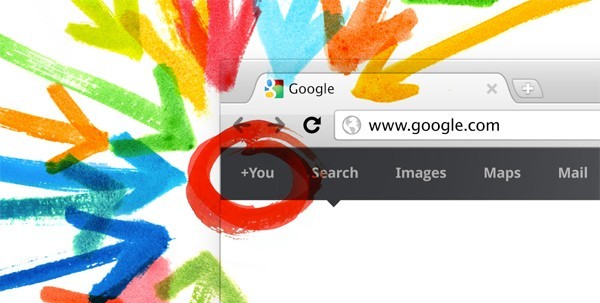


 Well, here's a strange
Well, here's a strange  If you’re looking for an alternative to Adobe Reader then there are plenty of tools available, each promising that they’ve the speed and feature set required to become your preferred PDF viewer.
If you’re looking for an alternative to Adobe Reader then there are plenty of tools available, each promising that they’ve the speed and feature set required to become your preferred PDF viewer.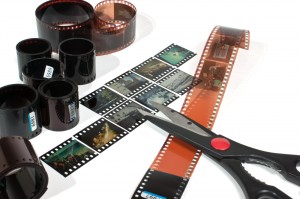 Photo editing and manipulation tools are not exactly in short supply but those that get the balance between the number of features and ease of use are few and far between. Despite featuring an interface that is somewhat off-putting to start with,
Photo editing and manipulation tools are not exactly in short supply but those that get the balance between the number of features and ease of use are few and far between. Despite featuring an interface that is somewhat off-putting to start with, 


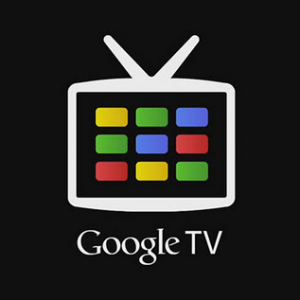
 The latest Windows Search is, in theory, a hugely powerful tool that enables you to construct all kinds of complex and detailed searches. So as well as entering wildcards, you can modify your results by looking for particular file sizes, types, modification dates, content, and even, say, MP3 files tagged with a particular year, or photos taken on a certain date.
The latest Windows Search is, in theory, a hugely powerful tool that enables you to construct all kinds of complex and detailed searches. So as well as entering wildcards, you can modify your results by looking for particular file sizes, types, modification dates, content, and even, say, MP3 files tagged with a particular year, or photos taken on a certain date. Apple’s
Apple’s 
 EASEUS Software has launched
EASEUS Software has launched 








 Before buying Galaxy Nexus last month from Verizon, I considered holding out for Galaxy Note, after hearing confident rumors about AT&T bringing it stateside. The idea of sketching and taking notes on a smartphone appealed. Samsung had created something of a hybrid -- a cross between a smartphone and tablet. Then I saw a Samsung media player on display at Best Buy, with a similar size screen -- 5.3 inches. Galaxy Note is too big for me. Is it for you?
Before buying Galaxy Nexus last month from Verizon, I considered holding out for Galaxy Note, after hearing confident rumors about AT&T bringing it stateside. The idea of sketching and taking notes on a smartphone appealed. Samsung had created something of a hybrid -- a cross between a smartphone and tablet. Then I saw a Samsung media player on display at Best Buy, with a similar size screen -- 5.3 inches. Galaxy Note is too big for me. Is it for you? Your computer can reveal a great deal of information about you and if other people have access to your machine, it would be all too easy for this data to fall into the wrong hands. Simply deleting files you no longer need is not enough as there are numerous tools that can be used to restore anything that has been erased -- even from a drive that has been formatted. This is where
Your computer can reveal a great deal of information about you and if other people have access to your machine, it would be all too easy for this data to fall into the wrong hands. Simply deleting files you no longer need is not enough as there are numerous tools that can be used to restore anything that has been erased -- even from a drive that has been formatted. This is where 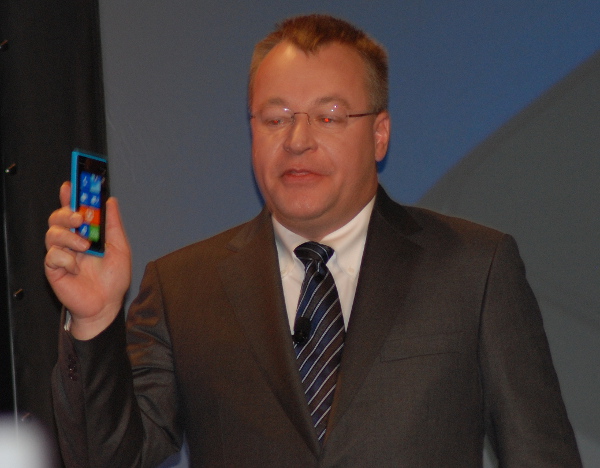




 As the technology industry gears up for its
As the technology industry gears up for its  Technitium has released version 6.0 of its
Technitium has released version 6.0 of its 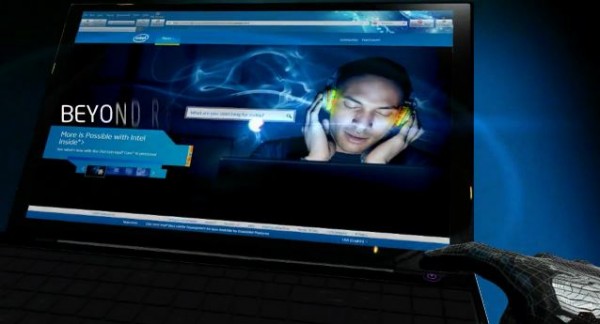




 While the release of a new operating system is generally quite exciting, even computer users who are keen to have the latest and greatest version of Windows installed are filled with a slight sense of dread at the prospect of the installation. While the installation process for Windows 8 is one of the fastest and easiest yet, there is still the problem of having to install the apps you need and transferring all of your files.
While the release of a new operating system is generally quite exciting, even computer users who are keen to have the latest and greatest version of Windows installed are filled with a slight sense of dread at the prospect of the installation. While the installation process for Windows 8 is one of the fastest and easiest yet, there is still the problem of having to install the apps you need and transferring all of your files. 




 There are a number of Office compatible office suites to choose from in Apple's App Store, so anything that wants to stand out from the crowd needs to offer something special. After a brief appearance followed by a rapid vanishing act,
There are a number of Office compatible office suites to choose from in Apple's App Store, so anything that wants to stand out from the crowd needs to offer something special. After a brief appearance followed by a rapid vanishing act,  One of the most overlooked components when choosing your next Windows PC is its keyboard. You get so caught up in making sure it’s fast enough, feature-packed enough and with enough storage to forget that something as fundamental as the keyboard could make it practically unusable.
One of the most overlooked components when choosing your next Windows PC is its keyboard. You get so caught up in making sure it’s fast enough, feature-packed enough and with enough storage to forget that something as fundamental as the keyboard could make it practically unusable.
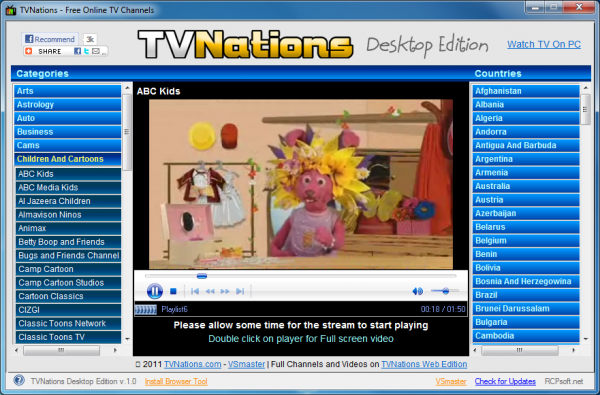

 It is important to keep your computer in good shape if you are going to get years of use from it and there are various techniques that can be used to ensure that you are getting the best possible performance from your hardware. While it is fairly easy to use the various tools that are built into Windows to keep your hard drive optimized, when it comes to the registry it is something of a different story. Windows includes a tool that can be used to edit the registry, but nothing that enables you to optimize it. This is precisely where
It is important to keep your computer in good shape if you are going to get years of use from it and there are various techniques that can be used to ensure that you are getting the best possible performance from your hardware. While it is fairly easy to use the various tools that are built into Windows to keep your hard drive optimized, when it comes to the registry it is something of a different story. Windows includes a tool that can be used to edit the registry, but nothing that enables you to optimize it. This is precisely where 
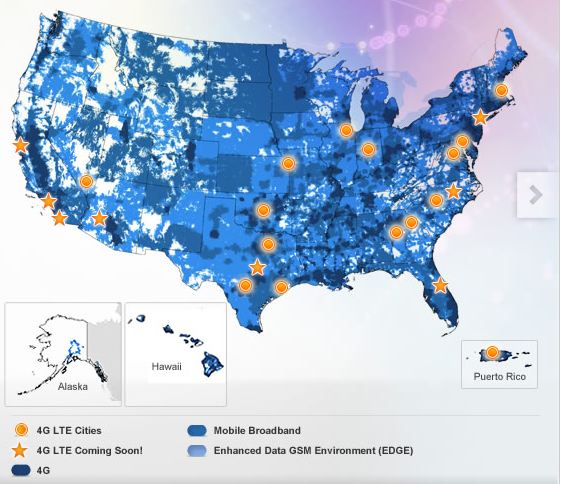

 Broadcom says it is using the platform of the Consumer Electronics Show next week to debut fifth generation wireless networking technology, dubbed 802.11ac. The wireless standard promises speeds of up to 1.3Gbps, which would make 802.11ac about three times as fast as 802.11n. It will also be about six times as power efficient, perfect for portable devices.
Broadcom says it is using the platform of the Consumer Electronics Show next week to debut fifth generation wireless networking technology, dubbed 802.11ac. The wireless standard promises speeds of up to 1.3Gbps, which would make 802.11ac about three times as fast as 802.11n. It will also be about six times as power efficient, perfect for portable devices.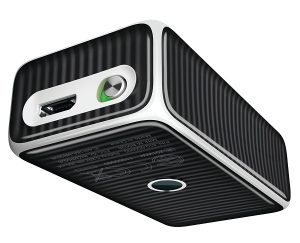 In a move that looks more like a clever ploy to attract bloggers and journalists to their booth at next week's Consumer Electronics Show than a product with any actual hope of success in the marketplace, Logitech on Thursday introduced the Cube. The rectangular shaped device is a mouse primarily, although it doubles as a presenter.
In a move that looks more like a clever ploy to attract bloggers and journalists to their booth at next week's Consumer Electronics Show than a product with any actual hope of success in the marketplace, Logitech on Thursday introduced the Cube. The rectangular shaped device is a mouse primarily, although it doubles as a presenter.
 If you want to download a particular Linux distribution you could go online, run a quick search or two, and you’ll probably turn up the necessary links fairly quickly. But a portable Windows tool called
If you want to download a particular Linux distribution you could go online, run a quick search or two, and you’ll probably turn up the necessary links fairly quickly. But a portable Windows tool called 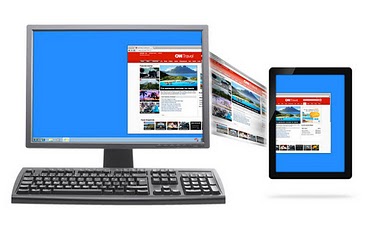 Anyone who has worked with a dual monitor setup will be aware of just what a productivity boost the extra screen space can be. The ability to have more than one application visible in full screen mode enables you to view more information at any one time is incredibly useful and it something that everyone should try. But whether you have a couple of monitors sitting on your desk or not,
Anyone who has worked with a dual monitor setup will be aware of just what a productivity boost the extra screen space can be. The ability to have more than one application visible in full screen mode enables you to view more information at any one time is incredibly useful and it something that everyone should try. But whether you have a couple of monitors sitting on your desk or not,  First released back in 2006, AIMP’s lengthy feature list has helped to make it a popular free audio player. It has been out of the news for a while as the developers worked on the latest release, but they’ve finally finished, and now we can all sample
First released back in 2006, AIMP’s lengthy feature list has helped to make it a popular free audio player. It has been out of the news for a while as the developers worked on the latest release, but they’ve finally finished, and now we can all sample 


 Microsoft and Mozilla simply couldn't ask for a better situation. At a time when
Microsoft and Mozilla simply couldn't ask for a better situation. At a time when 

 Four months after
Four months after  Whatever operating system you look at, it is fair to say that most people fall out of love with the default web browser pretty quickly. Windows users will find that they migrate away from Internet Explorer, while Mac owners are likely to adopt an alternative to Safari. The same is true for mobile platforms and when it comes to Android devices there is no shortage of web browsers to choose from.
Whatever operating system you look at, it is fair to say that most people fall out of love with the default web browser pretty quickly. Windows users will find that they migrate away from Internet Explorer, while Mac owners are likely to adopt an alternative to Safari. The same is true for mobile platforms and when it comes to Android devices there is no shortage of web browsers to choose from.  Open-source, cross-platform desktop publishing package
Open-source, cross-platform desktop publishing package  With even some budget computers now arriving with 1TB of storage, and perhaps more, drive space isn’t generally much of an issue these days. But we still get annoyed when we see software become unnecessarily bloated, grabbing vast amounts of hard drive real estate for no good reason. It’s lazy, and even if you have plenty of hard drive space left, will still slow down your searches, virus scans, defrags, and any other whole-drive operations.
With even some budget computers now arriving with 1TB of storage, and perhaps more, drive space isn’t generally much of an issue these days. But we still get annoyed when we see software become unnecessarily bloated, grabbing vast amounts of hard drive real estate for no good reason. It’s lazy, and even if you have plenty of hard drive space left, will still slow down your searches, virus scans, defrags, and any other whole-drive operations.


 If you’re working on a PC in a crowded area, and need to move away for a moment, then the system can easily be locked simply by holding down the Windows key and pressing L. You’ll return to the login screen, and only someone who knows your user account password will be able to restore normal operations.
If you’re working on a PC in a crowded area, and need to move away for a moment, then the system can easily be locked simply by holding down the Windows key and pressing L. You’ll return to the login screen, and only someone who knows your user account password will be able to restore normal operations. Understanding exactly which processes are listening for incoming network connections (and why) is an important part of monitoring your PC’s security. You can uncover this information with Windows alone (just enter netstat -anb at an elevated command window), but if you’d like the data to be displayed in a more intelligible way, and get plenty of assistance to help you figure out exactly what’s going on, then you’ll need something like
Understanding exactly which processes are listening for incoming network connections (and why) is an important part of monitoring your PC’s security. You can uncover this information with Windows alone (just enter netstat -anb at an elevated command window), but if you’d like the data to be displayed in a more intelligible way, and get plenty of assistance to help you figure out exactly what’s going on, then you’ll need something like 
 Developers David Sansome and John Maguire have launched the first stable release of their cross-platform, open-source media player.
Developers David Sansome and John Maguire have launched the first stable release of their cross-platform, open-source media player.  Open-source defragging tool
Open-source defragging tool 

 Chrome is an excellent browser, one of the best around, with plenty of essential functions and features.
Chrome is an excellent browser, one of the best around, with plenty of essential functions and features. While cloud storage may have taken off in a big way, most backup tools are yet to catch up: if you can save your target files to anything more than an FTP server then you’re probably very lucky.
While cloud storage may have taken off in a big way, most backup tools are yet to catch up: if you can save your target files to anything more than an FTP server then you’re probably very lucky. Your desktop wallpaper may be something you don’t give much thought to, but whether you have chosen to stick with a stock image, or have adorned your desktop with a photograph of loved ones or a favorite place, this is an image you are going to be seeing on a daily basis. It is easy to become bored of constantly seeing the same image, and being bored is not a mood that is conducive to being productive, whatever you are meant to be doing.
Your desktop wallpaper may be something you don’t give much thought to, but whether you have chosen to stick with a stock image, or have adorned your desktop with a photograph of loved ones or a favorite place, this is an image you are going to be seeing on a daily basis. It is easy to become bored of constantly seeing the same image, and being bored is not a mood that is conducive to being productive, whatever you are meant to be doing. 
